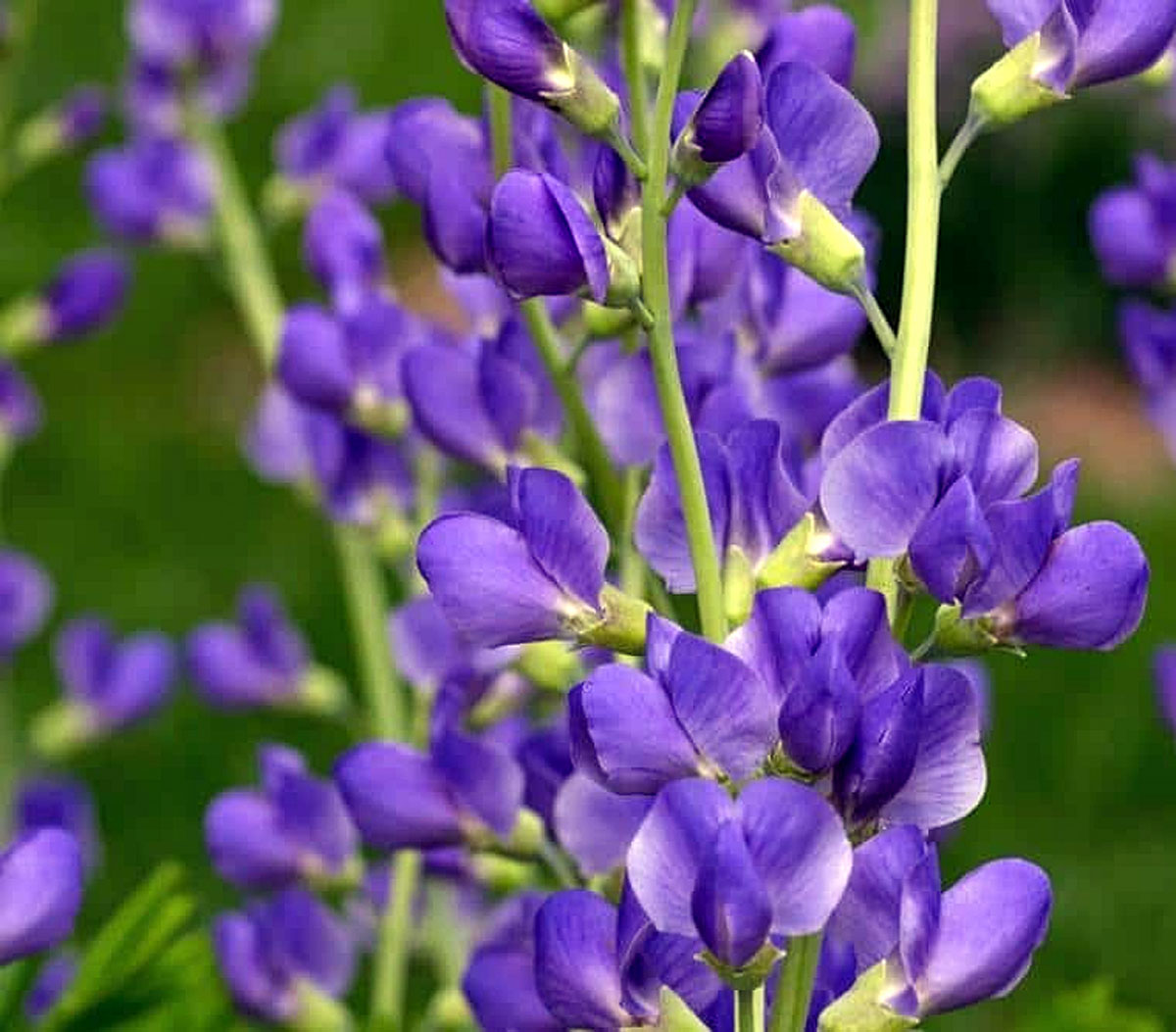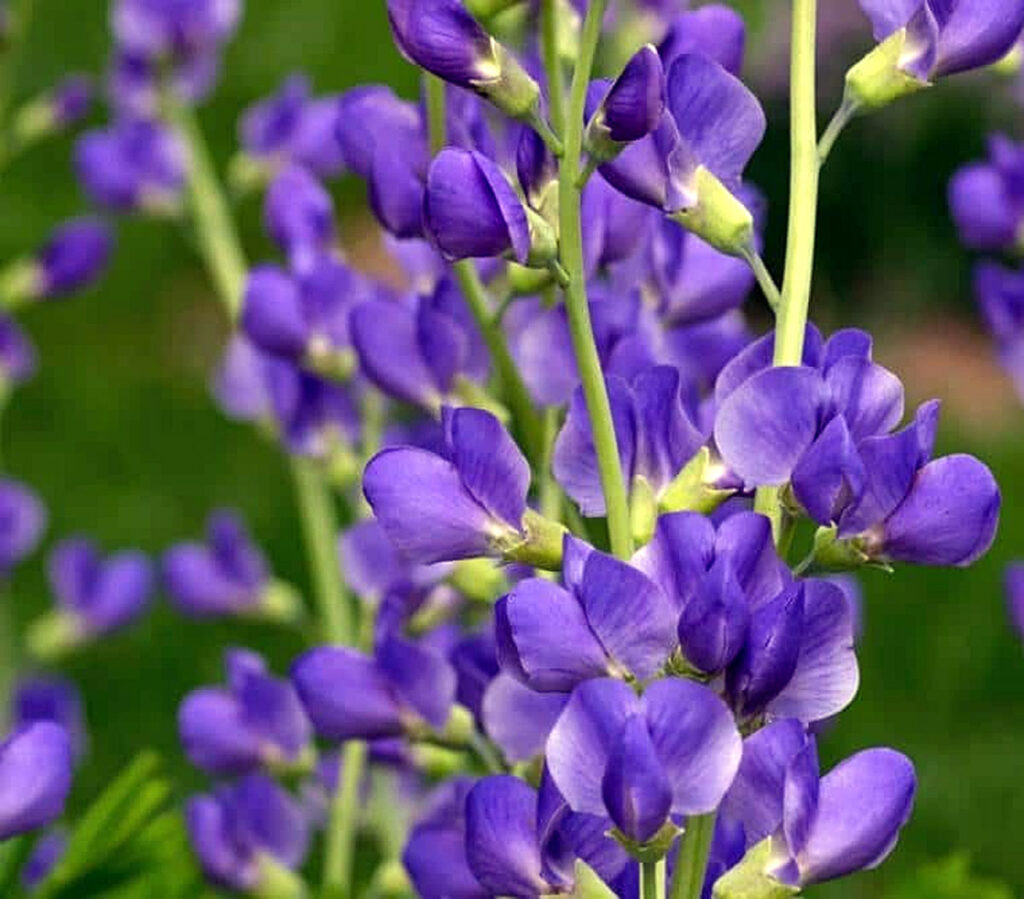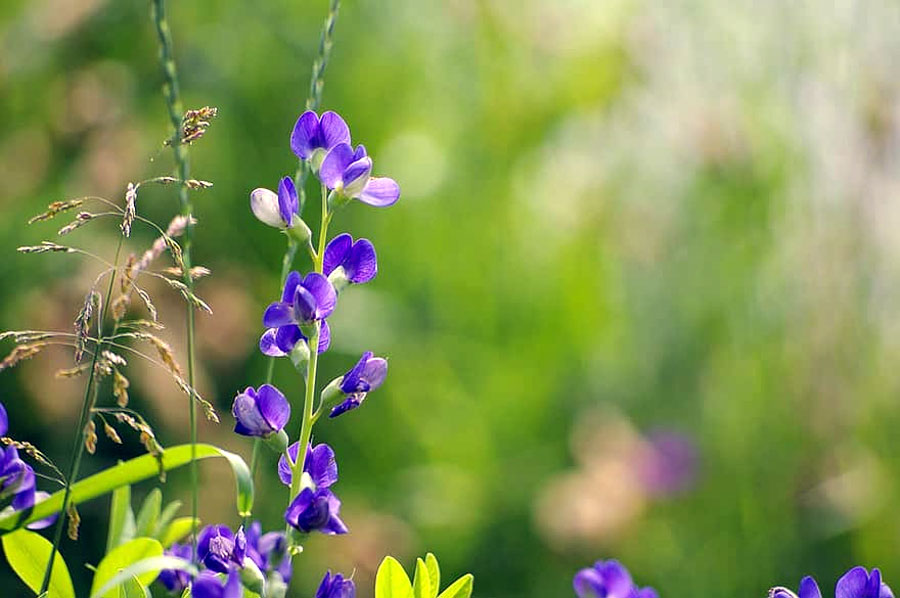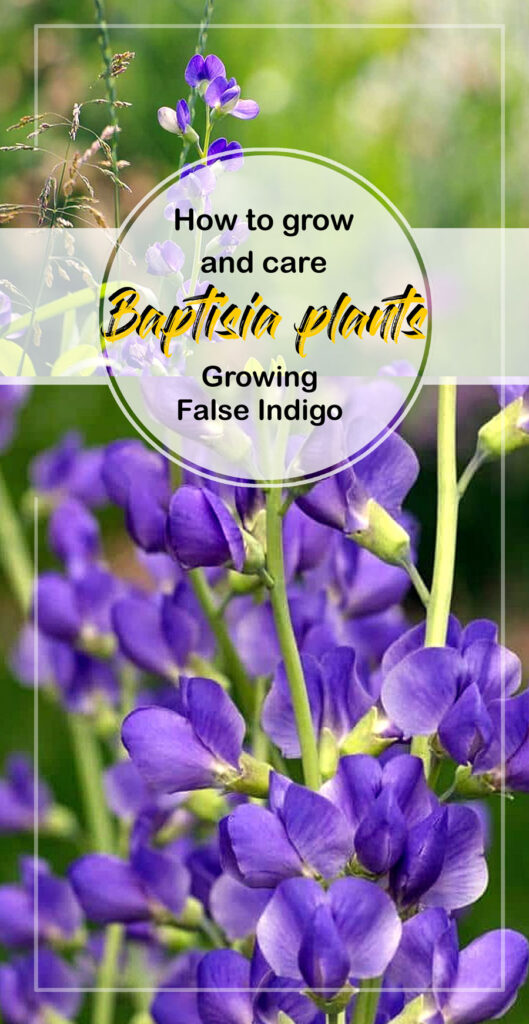
False Indigo Plant (Baptisia)
Baptisia (wild indigo, false indigo) belongs to the legume household, Fabaceae. They’re perennial herbaceous vegetation with flowering pea-like blossoms and pods which can be typically inflated. They’re native to jap and southern North American woodlands and grasslands.
The False indigo is a shrubby perennial present in late spring blooming in shades similar to yellow, blue, and purple. A brand new plant emerges within the spring, resembling a black asparagus shoot. Grey-green leaves and darkish stems happen on the big, spherical shoots because the plant matures right into a shrub-like plant.
Indigo blue is believed to facilitate the immune system, thereby purging infections. The treatment is usually used for ear infections, nostril infections, and throat infections. False Indigo root was historically used to purge by Native Individuals, and it was brewed into a chilly tea to forestall vomiting.

Overview False Indigo Plant
Scientfic title Baptisia
Widespread title Blue wild indigo, False indigo.
Plant sort Flowering plant
Solar Full solar tolerates gentle shade
Soil Effectively-drained profound, and wealthy soil
Soil pH Barely acidic to impartial
Blooming time March to Could

The way to Develop and Care about False Indigo Plant
Compared, vegetation began from seed can take as much as 4 years to succeed in their most peak when they’re began from nursery vegetation. Cultivating false indigo in spring is finest achieved when there isn’t any menace of frost. Upkeep is minimal for these vegetation.
Rising from seeds
Though false indigo seeds could be grown, it’s not recommended. Some varieties of scarification will enhance the germination of false indigo seeds since they’ve a troublesome outer coating. Ideally, you need to soak the seeds for a minimum of eight hours earlier than you scarify them, however some gardeners merely sow the seeds within the fall and await winter temperature to melt the seeds.
It takes three to 4 years for the seeds to develop and evolve giant sufficient to bloom meaningfully. Subsequently, stem cuttings are normally used to propagate these vegetation.
Rising from cuttings
- Regardless of their prolonged taproots, false indigo vegetation develop nicely from stem cuttings.
- With a pointy pruner, take stem cuttings round six inches lengthy containing a minimum of two leaf units and one leaf bud.
- Domesticate the slicing finish in a small pot of potting combine after dipping it within the rooting hormone.
- Be certain that the pot and minimize are wrapped in a plastic bag or one other sort of plastic. Monitor the pot incessantly, and evenly moisten it if the potting combine begins to dry out. Maintain it in a vibrant, uniformly heat location. It is going to take about eight weeks for the cuttings to root.
- As quickly because the slicing produces roots, take away the plastic and develop the brand new plant till it’s sufficiently big to domesticate within the backyard.
Daylight
It’s best to domesticate false indigo vegetation in full solar, although they tolerate gentle shade. Shade might end in much less flowering and staking could also be wanted. The False Indigo plant will grow to be slack if it doesn’t obtain a minimum of six hours of full daylight every day. Furthermore, the solar prevents fungal ailments as nicely.
Watering
The primary season is essential for False Indigo vegetation to ascertain correctly. Water them extra incessantly throughout dry climate. You will need to water the plant incessantly within the first season to spice up it to increase its lengthy taproot, which is able to end in a drought-resistant plant sooner or later.
Soil
With a purpose to develop false indigo efficiently, the soil ought to be barely acidic. Lime shouldn’t be added to the soil. One of the best soil for the False Indigo plant is well-drained, profound, and wealthy, though it may possibly develop fairly nicely in low-fertility soils as nicely.
Temperature and Humidity
It’s advisable to start cultivating a minimum of 5 weeks previous to the out of doors evening temperatures reliably reaching 10 C (50 F). There are circumstances that can facilitate the expansion of false indigo within the backyard all through its hardiness vary, zones 3 to 9.
When the humidity is excessive in a glass pot or plastic tent, the cuttings ought to root in roughly eight weeks. Offered it receives sufficient moisture within the soil, it does nicely in each dry and humid climates.
Fertilizer
The false indigo plant is likely one of the most easy vegetation to take care of. Fertilize your backyard early within the spring, adopted by extra summer season feedings, or use a slow-release fertilizer. Their development calls for no extra fertilizer or irrigation as soon as they’ve been established. You don’t need to fertilize it an excessive amount of as a result of it’ll trigger the plant to grow to be leggy and flop.
Learn additionally:
The way to develop and care Hoya vegetation. Rising and look after Ixora houseplants. The way to develop Calendula. 11 finest Winter flowers in your backyard. 9 Finest vegetation in your rest room. 9 Simple rising herbs in your backyard.
For pin
